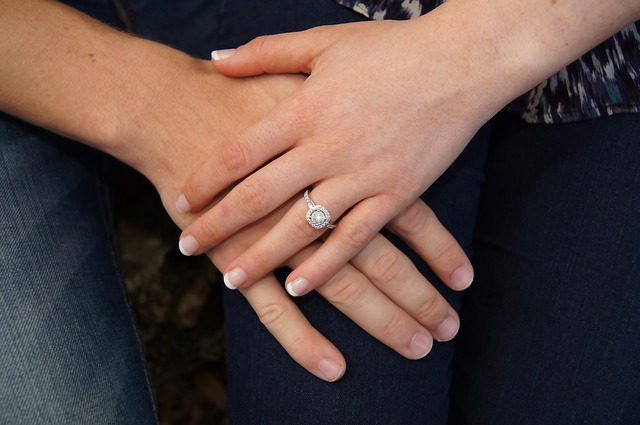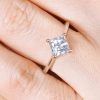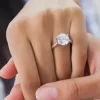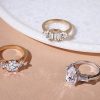Image Source: Pixabay
Diamonds are forever. This means that you also need to find a ring setting that lasts for as long. In fact, you will realise in your search for the perfect diamond engagement ring that the setting influences the overall look and quality of the ring. Hence, you really have to put as much thought on the mounting as you would on the centre stone.
There are a number of options for ring settings and the recommended diamonds to match. Let’s get to know some of these popular ring settings:
- Halo Setting
While the prong setting puts the diamond on a pedestal, the halo setting secures the centre stone underneath a rim, encircled in a collection of round pave or micro-pave, invisible-set or channel-set diamonds. This is a popular setting among celebrities because aside from its feminine and delicate appeal, the setting makes a high-carat centre diamond look enormous.
- Prong Setting
One of the most common settings for diamond engagement rings is the prong setting, which can hold up any stone size in place. A large stone or multiple stones from a selection of loose diamonds Australia jewellers have on offer is a popular recommendation. With this setting, the diamond will definitely be flaunted as it is raised up and unconstrained by a lot of metals. Because of this, the diamond is also able to disperse more light and showcase its sparkle.
There are varying prong settings that can easily be adapted to match the shape of the diamond. The settings also take into consideration the number of prongs used. For example, four- or six-prong settings are best for boosting round brilliant diamonds upward. A v-shaped prong is recommended for fancy-shaped diamonds like the pear or princess cut, to protect the sharply angled corners of the stone.
- Channel Setting
As the name implies, a channel setting is a type of mounting in which small diamonds are set securely in a row into the grooves of the band of the ring, creating a metal channel of sparklers. Each diamond is locked safely into individual seats to keep them from being knocked out. The diamonds can decorate just a portion of the band or its entirety.
 Image Source: Unsplash
Image Source: Unsplash
This is a popular setting for wedding bands, eternity, and anniversary rings that do not have a centre stone and features smaller stones. Although, the total cost for a ring with a channel setting may not be as enticing considering the metal and labour required to achieve it will make the ring a bit more expensive.
- Pave Setting
Pave and micro-pave settings exude an aura of timeless elegance and romance. The setting is best for smaller diamonds, as it literally means “paved with diamonds.” Tiny beads or metal prongs hold the diamonds in place. The diamonds are set at close proximity to each other so that the beads or prongs are less visible compared to other settings, creating a smooth surface of sparkling diamonds.
- Bezel Setting
The second most popular ring setting is the bezel, thanks to its modern appeal and suitability for active lifestyles. Instead of prongs, a custom-made thin metal rim holds the centre stone in place. You can opt for a full bezel setting that encircles the diamond completely or a partial bezel setting which holds two sides of the centre stone while leaving the other two open.
- Invisible Setting
The invisible setting is used on princess-cut diamonds or square diamonds. These stones are set side by side using special channels to create the illusion of an all-diamond surface. The contemporary style, but rather risky setting, makes the invisible-set smaller diamonds appear like one big diamond.

Image Source: Unsplash
By being aware of these settings, you should be able to maximise the durability as well as the beauty of your diamonds.







![Choosing a Diamond Ring [A Quick Run Through] Choosing a Diamond Ring](https://www.blushedrose.com/wp-content/uploads/2022/01/sabrianna-XEyyCJKg4yI-unsplash-100x100.jpg)